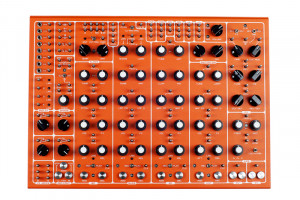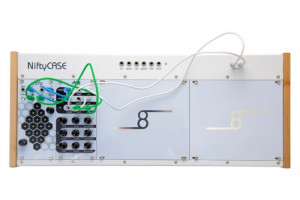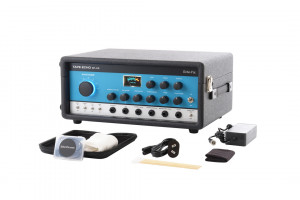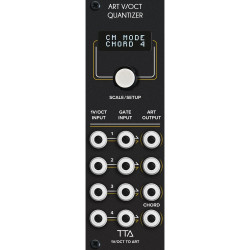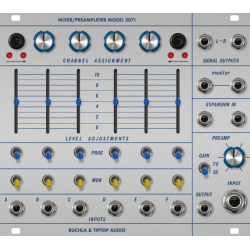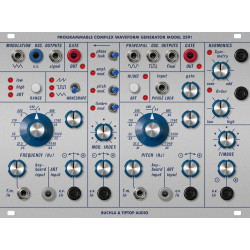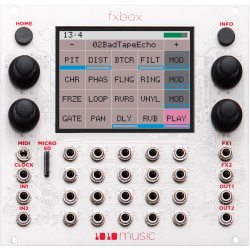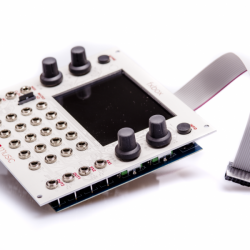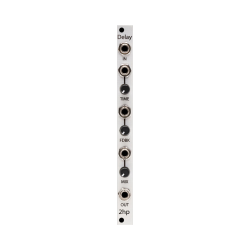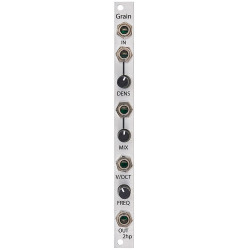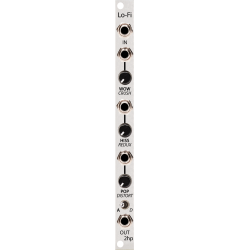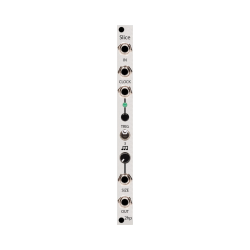
- Stock: In Stock
- Model: Graindefolie
More from this brand
Granular Synthesis uses small slices of sounds (grains) to compose new sounds from existing material. By combining multiple grains of differing lengths, amplitude, pitch, and speed, new sounds are created which are often very different from the original sound recorded in. Xenakis claims to have invented the technique and, indeed, his “Analogique A-B”, composed of tiny tape splices of pure tones, is credited as the first piece of granular music back in 1959.
In the context of the Z-DSP, a block of memory is set to hold digital samples for playback: the Z-DSP has one second of memory for the audio used in processing. From this audio buffer, the grains will be sampled and modified for playback with the number of grains determining how dense the overall output sounds. These programs have 3, 4 or 6 grains for playback. Each grain plays from a random point in the audio buffer and have an independent envelope controlling their duration. The envelope time is the “grain size” parameter in many of the programs.
The French phrase for the cartridge is “Grain de Folie”, which could be translated as “seeds of madness”, but in French “grain” also translates to “grain” and “madness” evokes the strange disassembling/reassembling granular process. Also, “avoir un grain de folie” is a typically expression to describe people behaving in a non-conventional way, thus a fitting play on words that quite nicely describes the unpredictable nature of this set of algorithms.
-285x169.png)


